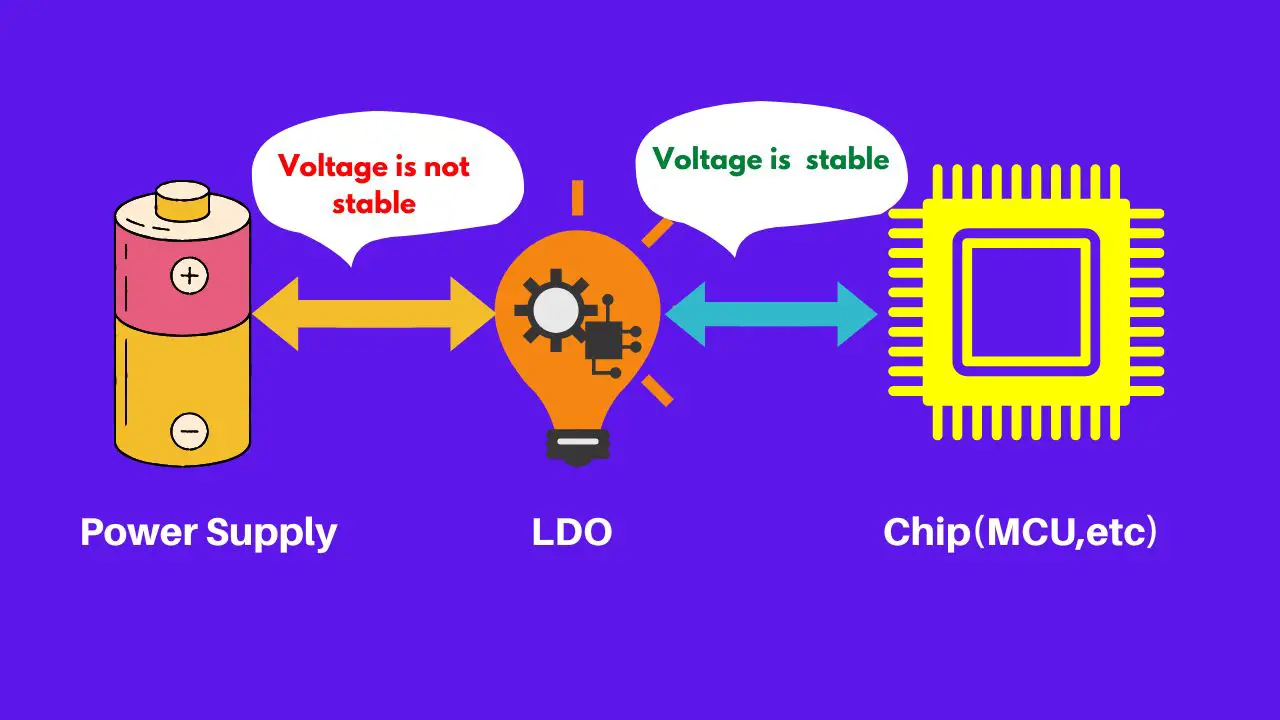LDO means low-dropout, which is a linear voltage regulator designed to operate with a very low input voltage differential and get stable output voltage.
A linear regulator with a very small potential difference between the input and output voltage is known as an LDO regulator.
Many different kinds of electronic equipment use linear regulators, a form of power supply integrated circuit that can provide a stable voltage from an input voltage. Using an LDO regulator can assist prevent heat buildup and promote energy efficiency since it can function at a minimal potential difference between the input and output voltage.
What is a linear Regulator?
A linear regulator is a sort of power supply IC used in many different electrical devices that can produce a constant voltage from an input voltage. The use of an LDO regulator can assist control heat build-up and enable efficient use of energy since an LDO regulator can operate at a minimal potential difference between the input and output voltage.

A type of linear voltage regulator known as an LDO regulator, or low-dropout regulator, can function with very little potential difference between the input and the output. For example, a typical battery has a range of 4 V at fully charged to 2.5 V at fully discharged. Even when the battery voltage is below 3 V, an LDO can still maintain the desired 2.3 V at the output.
Components of LDO
The elements of a Low Drop Out Regulator are the following,
Amplifier
The error amplifier’s primary design requirement is that it draws the least amount of current possible. Because the pass transistor’s gate capacitance will be high, the amplifier’s output resistance must be as low as possible.
Feedback
The output voltage is scaled down by the resistive voltage divider feedback, enabling the error amplifier to compare it to the reference value.
Output Capacitor
An LDO regulator needs an output capacitor to make sure that current is given to the load right away during load transients until the error amplifier is ready.
The capacitor types are:
- Ceramic Capacitors
- Polymer Capacitors
- Low-ESR Tantalum Capacitors
Voltage Reference
It establishes the operational point of the error amplifier, making it the beginning point of any regulator. A band-gap type voltage reference is typically employed because it enables operation at low supply voltages.
LDO Parameters
- Dropout Voltage
- Transient Response
- Quiescent Current
- Line Regulation
- Load Regulation
What is Dropout Voltage?
In a linear regulator, a transistor sits between the input voltage (VIN) and the output voltage (VO). The smallest voltage difference needed to keep the transistor working reliably is known as the dropout voltage.
If the voltage gap between the input and output dips below the dropout voltage, the transistor can’t stay stable, causing the output voltage to drop as well.
![]()